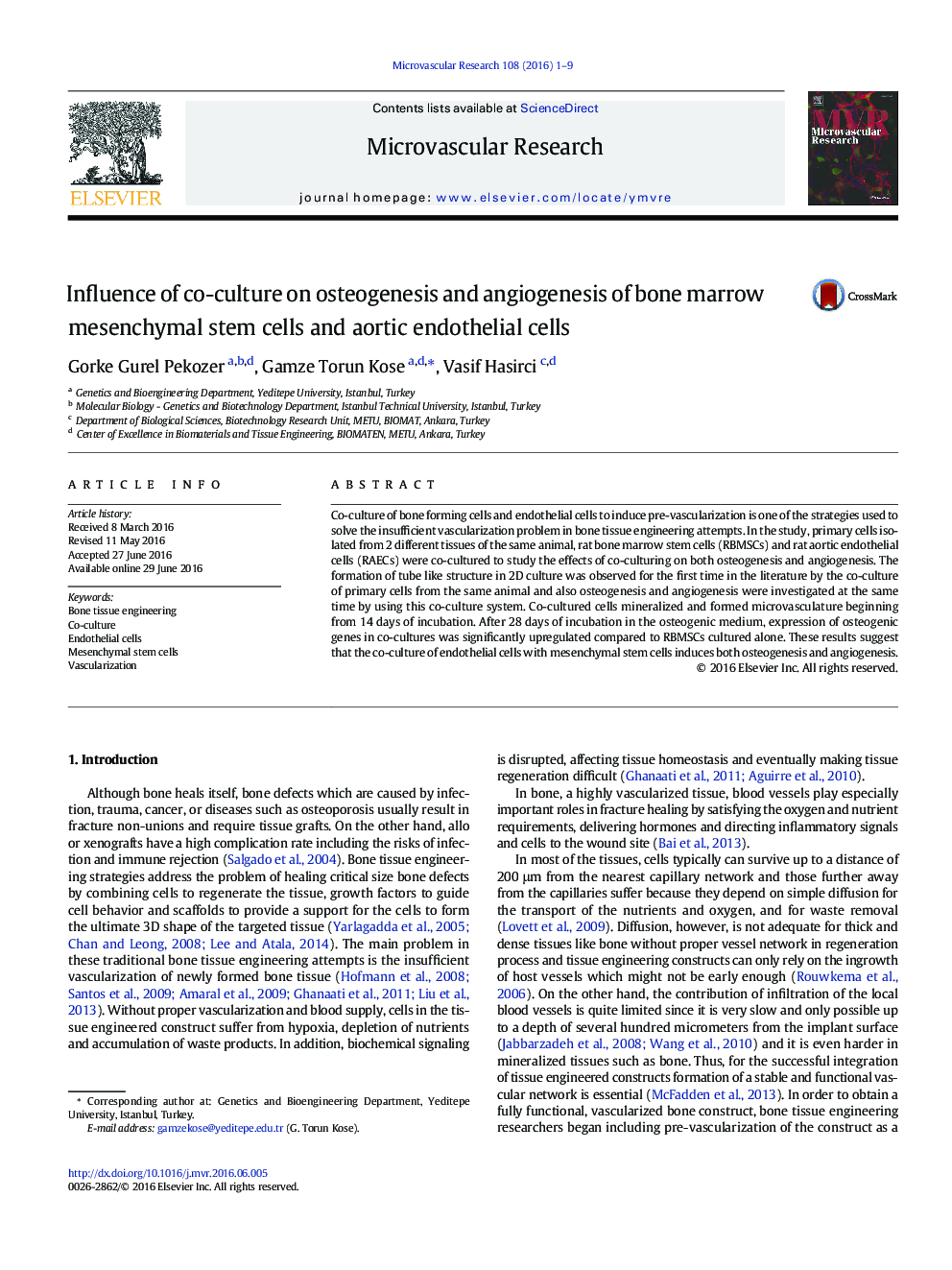| Article ID | Journal | Published Year | Pages | File Type |
|---|---|---|---|---|
| 1994649 | Microvascular Research | 2016 | 9 Pages |
•For the fate of the tissue engineered constructs after implantation, pre-vascularization strategies have been employed.•In vitro co-culture of ECs with bone forming cells mimic in vivo bone environment more closely than monotypic cultures.•Endothelial cells encouraged early commitment of MSCs to osteoblasts.•Co-culture of endothelial cells with MSCs induced mineralization and synthesis of bone organic matrix.•Not only endothelial cells had influences on osteogenesis but also RBMSCs contributed to angiogenesis.
Co-culture of bone forming cells and endothelial cells to induce pre-vascularization is one of the strategies used to solve the insufficient vascularization problem in bone tissue engineering attempts. In the study, primary cells isolated from 2 different tissues of the same animal, rat bone marrow stem cells (RBMSCs) and rat aortic endothelial cells (RAECs) were co-cultured to study the effects of co-culturing on both osteogenesis and angiogenesis. The formation of tube like structure in 2D culture was observed for the first time in the literature by the co-culture of primary cells from the same animal and also osteogenesis and angiogenesis were investigated at the same time by using this co-culture system. Co-cultured cells mineralized and formed microvasculature beginning from 14 days of incubation. After 28 days of incubation in the osteogenic medium, expression of osteogenic genes in co-cultures was significantly upregulated compared to RBMSCs cultured alone. These results suggest that the co-culture of endothelial cells with mesenchymal stem cells induces both osteogenesis and angiogenesis.
